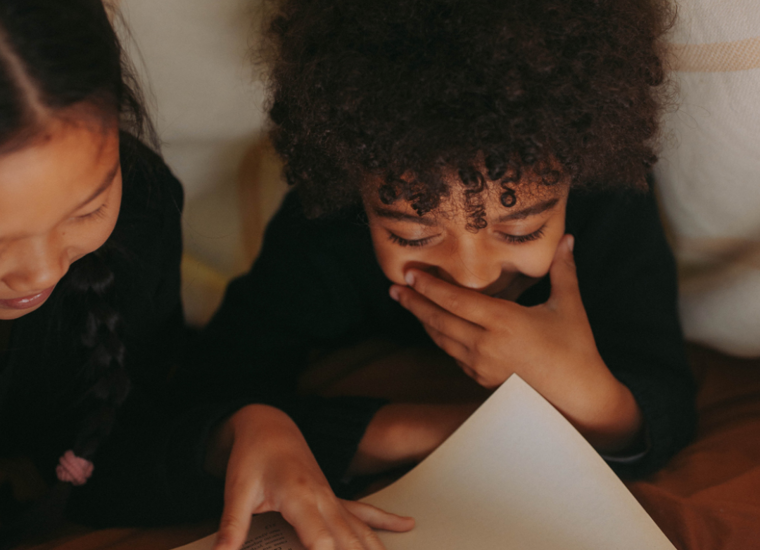A masterly visual storyteller
Shaun Tan is an Australian illustrator, known for his ability to create visually spectacular pictorial narratives with a constant human presence. His most critically acclaimed book, The Arrival, is a complex, completely wordless graphic novel about an immigrant family. Shaun Tan breaks down the boundaries of storytelling, taking us to a place beyond conventions and literary hierarchies.
 Photo: Stefan Tell
Photo: Stefan TellQuick facts
The jury’s motivation
Shaun Tan is a masterly visual storyteller, pointing the way ahead to new possibilities for picture books. His pictorial worlds constitute a separate universe where nothing is self-evident and anything is possible. Memories of childhood and adolescence are fixed reference points, but the pictorial narrative is universal and touches everyone, regardless of age. Behind a wealth of minutely detailed pictures, where civilization is criticized and history depicted through symbolism, there is a palpable warmth. People are always present, and Shaun Tan portrays both our searching and our alienation. He combines brilliant, magical narrative skill with deep humanism.
Shaun Tan has illustrated more than 20 books, notable among them The Rabbits (1998), The Lost Thing (2000), The Red Tree (2001), The Arrival (2006) and Tales from Outer Suburbia (2008).
Shaun Tan has reinvented the picture book by creating visually spectacular pictorial narratives with a constant human presence. He uses a variety of means of artistic expression: lead pencil, Indian ink, coloured pencil, painting and various print techniques. Shaun Tan sees every book as an experiment in visual and verbal storytelling.
Shaun Tan also collaborates on animated film, musical and theatrical adaptations of his works, as well as producing fine art and murals.
Shaun Tan has received a number of literary awards, including the Deutscher Jugendliteraturpreis in 2009 for Tales from Outer Suburbia and a New York Times Best Illustrated Children’s Books award in 2007 for The Arrival. At this year’s Academy Awards, Shaun Tan won the Oscar for best animated short film for The Lost Thing, based on his book of the same title.
His works have been translated into more than 10 languages, including German, Swedish, Spanish and Chinese.
Award Lecture
Visually spectacular pictorial narratives with a constant human presence
This text was written in 2011 by members of the award jury.
Shaun Tan is an illustrator and author. He was born in 1974 in Western Australia and grew up in a suburb of Perth, a city he describes as the most remote place on earth, sandwiched between a vast desert and an even vaster ocean.
As the son of a Chinese immigrant father and an Australian mother, he felt as somewhat of an outsider during his schooldays, but he was always the boy who could draw better than any of the others. In senior high school in Perth, he enrolled in a special art program for gifted students. Around the same time, he received his first illustration commission. In the mid-1990s he graduated in art, history and literature from the University of Western Australia. He now lives in Melbourne with his Finnish wife, Inari Kiuru.
He has illustrated some 20 books, including a handful of titles where he was both author and illustrator. He also collaborates on animated film, musical and theatrical adaptations of his works, as well as producing fine art and murals.
Shaun Tan breaks down the boundaries of storytelling, taking us to a place beyond the picture book, beyond the comic strip album, beyond conventions and literary hierarchies. Beyond the world as we know it, in fact. Readers encounter a narrative that occupies their entire consciousness. It is not just the formal structure of the books, with their lavish illustration, that takes the reader’s experience to a new level. The extreme diversity of the content, which has been described as a universe in itself, also transports us there. Shaun Tan’s visual worlds engage us and make us fellow players, as though we have stumbled into someone else’s dream.
In Shaun Tan’s books, the future is assembled from the past. We encounter things we are familiar with and think we know, but also completely new and surprising occurrences. Retrofuturism might be one word to describe this fluid experience that transcends place.
To encounter Shaun Tan’s books is to encounter a creative person with a passionate and unconditional love for illustration and narrative as well as his own vision. Shaun Tan sees every book as an experiment in visual and verbal storytelling, “… part of an ongoing exploration of this fascinating literary form.” Even if he is not explicitly narrating for children, he has at the back of his mind the notion of producing something a child can relate to: “It’s like a good guide for any artistic project – if a kid can relate to it … then you’re probably on the right track.”
In his very first major picture book, The Viewer (1997), written by Gary Crew, Shaun Tan shows himself to be a true postmodernist with a mastery of visual creation. “For the curious child in us all” reads the introduction to The Viewer, a nightmarish, science fiction inspired work that plays games with perspective, time and space. The result is eerie but magnificent.
Shaun Tan describes The Rabbits (1998) as a major step forward for him on a personal level. After initially not succeeding to get a proper feel for John Marsden’s text, he eventually found a solution. He presented, as he puts it, “… more unexpected ideas to build a parallel story of my own. Not an illustration of the text, but something to react with it symbiotically.”
The book is a symbolic portrayal of Australia’s colonial past or, more generally, of what happens when a technologically advanced culture meets one rooted in nature. Shaun Tan describes The Rabbits as a story about power, ignorance and environmental destruction, but also as a dark, serious animal fable, a narrative form he believes is understood by everyone. The clear criticism of civilization in The Rabbits recurs frequently in Shaun Tan’s books, explicitly or implicitly, and is one of his core themes.
The Lost Thing (2000) is a multi-layered, surrealist tale about identity and alienation, but also about opportunities. This is our first encounter with Shaun Tan as both author and illustrator. The restrained text is translated into a magnificent visual creation depicting the strange encounter between the first-person narrator, the author’s alter ego, and a gigantic being that is both a classic machine and living creature in the same body, “the lost thing”. The tension is already apparent. How can something so large and spectacular be lost? Almost invisible to most people, in fact. Could it symbolize its finder’s discovery of his own inner potential? A question that becomes more acute when the narrator takes “the lost thing” home to meet his family and his parents scarcely pay it any notice.
The questions pile up in this way while Shaun Tan gives full expression to his register of art history and industrial history references. We encounter stories embedded within stories. The collage technique, with layer upon layer of information, means that each aspect invites closer examination, its own expedition of discovery. Shaun Tan explains: “All of these elements came together in the production of a visual narrative that is at once very simple and accessible, yet complex and irreducibly enigmatic, even for me … it wouldn’t work if I understood too much about it.”
The Lost Thing has been adapted for the stage and made into a film, which won the Oscar for best animated short film at the 2011 Academy Awards.
The Red Tree (2001) is built around the tendency of children and adults to describe their feelings using metaphors such as monsters, storms, sunshine and rainbows. In The Red Tree, Shaun Tan wanted to go beyond the clichés. Through painted images, he explores the expressive potential of these shared fantasies. Initially, Shaun Tan says, he had also intended to portray positive emotions, but as his work progressed he discovered that “the negative emotions – particularly feelings of loneliness and depression – were just much more interesting from both a personal and artistic point of view.” In dazzlingly beautiful images, with minimal text and no action in the conventional sense, the book tells the story of a frail little girl who, on her travels, finds herself in a variety of rather frightening existential conditions and moods before discovering, on her return home, a symbol of hope: the little red tree growing in her bedroom.
With its wealth of associations, this open narrative accommodates many possibilities for identification and interpretation that invite readers to create new stories of their own. The book has been adapted for the stage and used therapeutically to empower seriously ill children and adults to verbalize their emotions.
Shaun Tan’s most critically acclaimed and innovative book, The Arrival (2006), is a complex, completely wordless graphic novel and a unique, epic work in every sense. In it, Shaun Tan expands on an autobiographical theme to which he frequently returns: being different, not fitting in, finding yourself on strange, precarious territory. Symbolizing the autobiographical nature of the experience described, he used his own face on the protagonist.
The Arrival is about an emigrant family. The father moves to a new country, where he is eventually reunited with his family after a long separation. The magical realism of which Shaun Tan is so fond permeates the entire work. The book takes the form of a well-worn photograph album with slightly sepia-toned pages filled with drawings in black and white.
The external structure is tightly defined: departure, arrival, frightening foreign encounters, adapting, reuniting. The naturalistic surface is broken by the magic of the images, in which fantastic creations – unfamiliar animals and strange buildings – are mixed with familiar elements. This technique creates powerful mental images, an empathy on the part of the reader with an immigrant’s vulnerability. The reader is drawn into the drama that results when someone completely lacks the words to express the true implications of an encounter with a new, incomprehensible and alien world. The signs are written in characters that no-one can decipher.
The Arrival is a mammoth book project that took five years to bring to fruition. It leaves no reader unmoved. Shaun Tan’s determination to never compromise on his vision is present throughout the book. A deeply humanistic tone, very typical of Shaun Tan, resonates through this wordless world.
In his latest book, the anthology Tales from Outer Suburbia (2008), Shaun Tan relates 15 stories from his upbringing in the suburbs – a place often characterized, according to Shaun Tan, as banal, mundane and even boring. “Yet I think it is also a fine substitute for the medieval forests of fairytale lore, a place of subconscious imaginings. I’ve always found the idea of suburban fantasy very appealing”, he says, setting out the notion of the double life of the suburbs: a visible life that is often somewhat ridiculed, and an invisible, secret life.
The book is inventive and shows genuine delight in storytelling. It is almost a collection of urban legends, with stories arising out of apparently trivial, everyday happenings. In this work, Shaun Tan has written longer texts in the voice of a universal narrator and combined them with lavish illustrations, whose character alters from one story to the next. He unleashes his full repertoire of artistic expression: lead pencil, Indian ink, coloured pencil, painting with various media, various print techniques and – as in all his books – an astonishingly rich artistic treatment of every part of the book, right down to the copyright notice and credits, the table of contents and the ISBN number. This is great book art, a key component of Shaun Tan’s ability to create visually spectacular pictorial narratives with a constant human presence.
… I often like to think of words and images as opposite points on a battery, creating a potential voltage through a ‘gap’ between telling and showing. It requires the reader’s imagination to complete the circuit …

Discover our laureates
The Astrid Lindgren Memorial Award is awarded to authors, illustrators and narrators, but also to people or organizations that work to promote reading.
Find out more about the laureates
Children have the right to great stories
To lose yourself in a story is to find yourself in the grip of an irresistible power. A power that provokes thought, unlocks language and allows the imagination to roam free. The Astrid Lindgren Memorial Award was created in 2002 by the Swedish government to promote every child’s right to great stories.
Find out more about the award